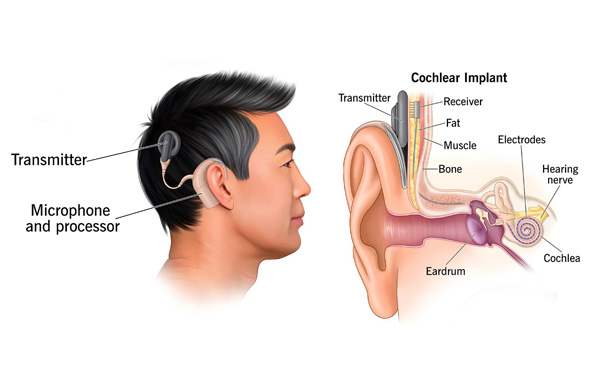Why Experts Opt for 'Minimally Invasive Neurosurgery'

Neurosurgery has seen significant advancements over the years and one of the most notable developments is the adoption of minimally invasive techniques. Minimally invasive neurosurgery is now widely favoured by experts due to its numerous benefits, such as quicker recovery, reduced pain and fewer complications. At Neotia Getwel Multispecialty Hospital, patients have access to 24x7 medical assistance and emergency services, ensuring they receive prompt and high-quality care whenever needed. This blog explores why experts increasingly choose minimally invasive neurosurgery and how it has revolutionized the field of neurosurgery.
What Is Minimally Invasive Neurosurgery?
Minimally invasive neurosurgery refers to a set of surgical techniques that allow doctors to operate on the brain, spine, or nervous system with minimal disruption to surrounding tissues. Unlike traditional neurosurgery, which involves larger incisions, minimally invasive procedures use small cuts and rely on high-tech tools, such as endoscopes, microscopes and advanced imaging technology.
These technologies help surgeons navigate through critical areas of the nervous system with enhanced precision, leading to faster recovery times and fewer post-operative complications for patients.
Why Experts Prefer Minimally Invasive Neurosurgery
There are several reasons why minimally invasive neurosurgery has become the preferred approach for many neurosurgeons. These include:
1. Reduced Trauma to the Body
Traditional neurosurgery typically involves large incisions and significant manipulation of tissues, which can lead to prolonged recovery times and considerable pain for patients. Minimally invasive procedures, on the other hand, involve smaller incisions and less tissue disruption. This means that patients experience less physical trauma and can recover more quickly.
For example, in spine surgery, instead of making a large incision to access the spinal column, surgeons can use specialized instruments to work through small openings. This minimizes the damage to muscles and bones, significantly reducing the patient's pain and recovery time.
2. Faster Recovery Times
Because minimally invasive techniques cause less damage to the body, patients generally experience faster recovery times. In some cases, they can leave the hospital within a day or two, whereas traditional neurosurgery may require longer hospital stays and extended recovery periods at home.
Patients undergoing spine surgery, for instance, may be able to return to their daily activities within weeks, compared to months for more traditional surgical procedures.
3. Lower Risk of Complications
Minimally invasive neurosurgery is associated with a lower risk of complications, such as infections and damage to surrounding tissues. The smaller incisions reduce the likelihood of post-operative infections and the use of real-time imaging technologies during surgery enables surgeons to perform procedures with greater accuracy. This precision reduces the risk of inadvertent damage to nerves, blood vessels, or other critical structures.
In brain surgeries, where precision is paramount, minimally invasive approaches allow surgeons to avoid critical areas and structures with minimal risk, which is crucial in reducing post-surgical complications.
4. Less Post-Operative Pain
The smaller incisions and reduced tissue damage associated with minimally invasive neurosurgery typically result in less post-operative pain for patients. As a result, patients often require fewer pain medications after surgery, which helps them avoid potential side effects from these drugs.
For patients undergoing procedures such as minimally invasive spine surgery, less muscle and tissue disruption translates into significantly less pain, making the recovery process smoother and more comfortable.
5. Smaller Scars
Another benefit of minimally invasive neurosurgery is the smaller, less noticeable scars. Traditional neurosurgery can leave large, visible scars that may be a source of discomfort for some patients. Minimally invasive techniques, with their smaller incisions, result in smaller, less conspicuous scars. This is particularly important for surgeries on visible areas, such as the head or neck.
6. Improved Surgical Precision
Minimally invasive neurosurgery relies on advanced technologies, such as high-definition cameras and computer-guided navigation systems, which allow surgeons to operate with exceptional precision. These technologies enable doctors to visualize internal structures in real time, ensuring that they can avoid critical areas and minimize the risk of complications.
For instance, during minimally invasive brain surgery, surgeons can use intraoperative imaging to navigate through the brain’s complex structure with pinpoint accuracy, avoiding vital areas while effectively treating the condition.
Common Procedures in Minimally Invasive Neurosurgery
There are several common procedures where minimally invasive techniques are used, including:
- Endoscopic Brain Surgery: This involves the use of a small camera (endoscope) to remove brain tumours or perform other delicate procedures through tiny incisions.
- Minimally Invasive Spine Surgery: Surgeons treat conditions like herniated discs and spinal stenosis using specialized tools through small incisions, avoiding major disruption to muscles and tissues.
Conclusion
Minimally invasive neurosurgery offers numerous advantages over traditional methods, including reduced trauma to the body, faster recovery times, less post-operative pain and a lower risk of complications. These benefits make it the preferred choice for many surgeons and patients. As technology evolves, minimally invasive techniques are expected to play an even more significant role in neurosurgery, providing safer and more efficient treatment options. Neotia Getwel Multispecialty Hospital is at the forefront of these advancements, offering cutting-edge minimally invasive neurosurgical procedures along with 24x7 medical assistance.
Disclaimer
Though all attempts are made to provide correct information on the subject, inadvertent & typographical errors arising out of manual intervention cannot be ruled out. Any such discrepancies should be brought to the blogger's notice for correction.













